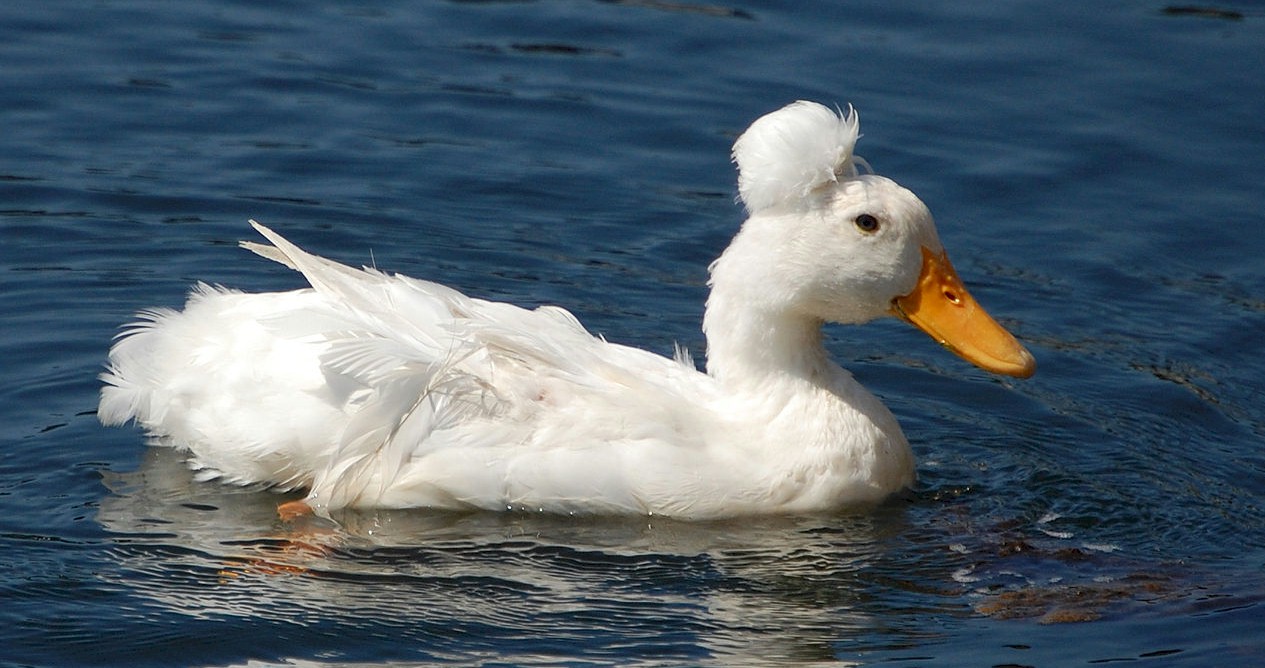Duck Breeds
 |
| Photo Source: Wikipedia.org |
Crested ducks have a fluffy bump on the back of their heads. The bump is a result of a genetic mutation causing a deformity of the skull.
The Crested duck, apart from its distinctive crest, has a typical medium-sized appearance. Its color may vary, although in the US only black and white are recognized, while in the UK and some other European countries, any color is allowed. The crest of the Crested duck can range from small to large, with some having a diameter of around 13 cm. This breed is characterized by its long, slightly arched neck, medium-sized body, and full breast.
Despite its potential as a good layer and good meat quality, the main attraction of the Crested duck is as a pet or decorative item. It is not commonly used in shows, as the crest gene can cause a buildup of fat in the skull, leading to mobility issues. The fat buildup can lead to problems such as a tottering walking pattern, seizures, neurological issues, and even early death.
The Crested duck has an uncertain origin, but it is believed to have originated in the East Indies and was later developed in Holland. This breed can be seen in seventeenth-century paintings by artists such as Melchior d'Hondecoeter and Jan Steen.
In 1853, the Crested duck was described by D.J. Browne in the United States. The white Crested was officially recognized and added to the American Standard of Perfection in 1874, while the black variant was added in 1977. The Crested duck was also recognized in the United Kingdom in 1910.
In the late twentieth century, a miniature version of the breed, known as the Crested Miniature, was bred by John Hall and Roy Sutcliffe in the United Kingdom. This breed was officially recognized in 1997.
